
..........................................................................................................................................................................................................
a farmers' market
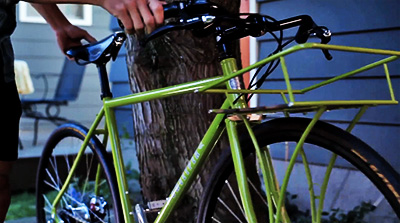
islay is divided into a series of interlocking estates, all of which are owned by non-resident landowners. this might imply that things have not moved on much since the highland clearances, but in point of fact, the reality is somewhat different. the most northerly of the estates is that of dunlossit, an amalgam of forestry, farming, fishing, deer-hunting and likely a plethora of other activities that estates regularly indulge in. it is owned by bruno schroder of schroder's bank who, suffice it to say, is not short of a bob or two and a not infrequent visitor to islay in his own private aircraft.
the estate office is ensconced at knocklearach farm, not one kilometre from the disaster of a cattle-grid to which i drew attention only a matter of days ago. just behind the substantial farmhouse is a barn conversion that, within the last year, was home to islay's version of a farmers' market. bridgend is home to islay house community garden. the building in whose grounds this garden exists was once the home of the margadales, current owners of islay estates, but in the last few decades the large building and a substantial portion of its grounds were sold to a former american pilot who still counts it as one of his homes, though he did place it on the open market a couple of years back.

the gardens are, as the name would imply, largely run by community volunteers under the auspices of a garden manager and have regularly entreated the local population to take advantage of the opportunity to purchase freshly grown vegetables. the similarities to a farmers' market are there for all to see; it's simply the islay version in the face of a farming community based primarily on livestock and the growing of barley for distilling. the garden is within reasonable reach of the majority of the island's population, though in true local style, few would ever consider utilising a bicycle to visit, purchase and subsequently transport their cabbages, carrots and potatoes off home.
the alternative at dunlossit (which i'm not entirely sure is still in operation), is in an altogether less accessible location, one that is none too attractive for even the most intrepid bicyclist. the approach from ballygrant village encompasses a hill that briefly reaches around 18%, while the ride from bridgend takes in a lengthy climb of an average 8%. it cannot be denied, however, that both would offer rather exhilarating rides home for any purchased vegetables. neither would it be too unkind to state that the island does not provide particularly satisfactorily for those keen on the quest for regular purchase of freshly grown home produce. but it would also be fair to point out that there is hardly anything resembling a cycling community intent on making use of this almost non-existent facility.
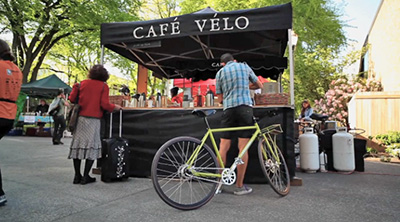
the same cannot be levelled at the rather substantial village of portland in oregon. on my most recent exploration, i visited one of several farmers' markets throughout the area with harth huffman of wabi woolens, one that was situated right outside a co-operative supermarket (as distinct from the co-op in main street, bowmore), where it was possible to choose from a wide range of coffee beans and then grind them as required. there was also a substantially sized fridge unit stacked with all manner of vegan products and at rather attractive prices (if my immediate mental conversions were accurate).
as portland village is relatively flat, 'tis but a simple matter to hop on an appropriately fendered and racked bicycle to collect and return with a substantial amount of personally selected produce. it is perhaps of little surprise that ira ryan, only a few days later, won a nahbs prize for his bicycle and chris king headset hinged trailer built for a portland chef to collect the daily veg from a nearby farmers' market. it is, for a certain portion of portlandians, the ideal way to shop. it was, therefore, surely only a matter of time before some enterprising portland framebuilder offered a bicycle named for the purpose, and that framebuilder is natalie ramsland of sweetpea bicycles. in fact the bicycle on offer is precisely named for the purpose: the sweetpea farmers market.

in contrast to the british way, natalie says that this style of bike is one that has never gone away, so i wondered if this was still faithful to the original idea or had it been developing on the back of envelopes over the years? "The Farmers Market developed over time, not so much on the back of envelopes, but through a series of bikes in which we explored ideas and solutions for a robust transportation bike. There was, of course, our original bike that we called The Farmers Market, whose rider reminded us that bikes don't have to be precious in order to be dear. Then there was a Rohloff hub bike with matching racks that had, designed to the last detail to be versatile enough to deliver pies or go bike camping. Another bike played with a visual minimalism that kept its utter pragmatism a secret. I brought together these values of easy-going strength, adaptability, and simplicity in designing the Farmers Market."
it would be naive to suppose that north america has become immune to the vicissitudes of the motor car. though geographical exploration was not one of the finer points of my visit, when in kansas city a few years ago, i became versed in the opinion that it would be well nigh impossible to survive there without a motor car. it seemed that all the necessary points for shopping existed in isolation, and the concept of collecting the daily or weekly necessities by bicycle would be pretty darned difficult, let alone remotely pragmatic. however, i often get the distinct impression that there are enclaves in the uk for which the phrase 'farmers' market' means little or nothing at all. as i have already intimated, portland is well accustomed to the idea, having embraced it by the basketful, but does natalie see this style of bicycle as a principally american genre, britain having just not 'got it' yet?
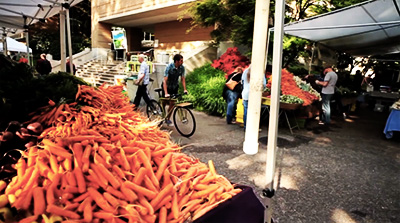
"I think it is so interesting that you see this as an American genre, because I think our side of the pond seems to romanticize and recreate city bikes that refer to another time or place; French porteur bikes, Scandinavian cruisers, etc. But style aside, I think that the functional elements of these transportation bikes reflect growing ridership and safer streets in American cities like Portland. When more people ride bikes, the ways people ride and what they chose to ride seems to diversify."
aside from my consideration of the farmers market (the bike) as being a bastion of certain portions of north american society, what is pointedly clear is sweetpea's determination to flesh out the frame with indigenous componentry. does she consider it of importance that as many parts as possible are sourced from her home continent? "It is. A name like Farmers Market naturally suggests a sense of place, a preference for the local and the sustainable. And it's true that with every bike we build, we have certain opportunities to choose USA sourced products. Still, I wouldn't say I let a preference for US made items inform every material and component choice. Rather, I was interested in creating an aesthetic that highlighted American design and manufacturing. Modern innovation and craft is more relevant than endlessly re-doing retro."
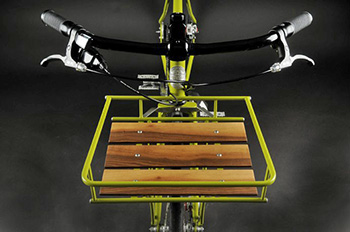
the bicycle is constructed entirely in steel, the staple material of the majority, if not all of portland's builders. this particular model utilises good old tradtional 4130 chromoly: a mix of reynolds tubes, straight gauge seat stays, paragon dropouts and one of those fabulous, flat top pacenti fork crowns. though natalie ramsden builds the sweetpea frames in north east portland, the famers market is built by her fabrication partners in central oregon, and she has a bike-fitting studio on the mezzanine floor above jude kirstein's sugar wheelworks in north williams avenue, the wonders of the interweb and international shipping mean that her output is no longer restricted to the streets of portland village and others in north america. presumably she is open to offers of interest from this side of the atlantic? "Absolutely! The Farmers Market was made to see the world."
taken literally, and bolstered by the short film displayed below, riding to and from the nearest farmers' market, wholefood store or, indeed, community garden is unlikely to recreate the effort required to attack alpe d'huez's twenty-one hairpin bends. that would preclude the need for eleven electronic gears, or perhaps any form of derailleur gear. i'd figure on a single-speed (the manner in which the basic model is offered) or perhaps one of those remarkably user-friendly, shimano alfine eight-speed hub gears. which would she see as the most practical choice, given the bike's intended purpose? "The best gearing option is the one that suits your topography, your daily commute, and your budget. This is the sort of bike that you can go off to college on as a single speed and then upgrade to an eleven speed when you take a job in San Francisco. Or upgrade to a Rohloff 14-speed when you embark on your cross-country tour."

till now, sweetpea's major claim to fame and distinction in a city seemingly filled with framebuilders has been that of specifically targetting the female market. there are one or two select areas of glasgow where a bloke riding a bicycle with sweetpea emblazoned on the downtube would be just asking for trouble. however, the movie depicts a chap sneaking off on his female partner's bike. is this natalie's way of showing that sweetpea bicycles are no longer singularly the preserve of the fairer sex?
"We've built many Sweetpeas for fellas over the years. But the reason our video tells this particular story is that it is far too common that women will get their boyfriends handed down bike or will upgrade to a bike designed for men just to get the components and performance they are looking for. We wanted to turn that on its head a bit. Women should have bikes that make their boyfriends jealous!"
those of us who count ourselves as amongst the senior members of the pelotonese are perhaps more used to a wide range of sizing options for our alpe d'huez climbing race bikes. given sweetpea's proclivity for providing appropriate pedalling hardware for the female population, does the offering of the farmers market small, medium and large apply just as well to the male of the species? "The standard sizes S, M, and L relate to women's sizing, but I should point out that most of our Lust Line customers opt for the custom geometry upgrade so that the bike fits them perfectly."
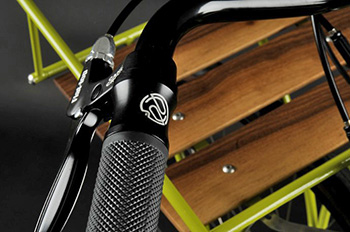
it's a curious notion that the male cognoscenti have their heads serially turned and influenced by the european racing bike, despite a blatant lack of practical necessity for just such a bicycle. that said, a particular majority within this society spend the bulk of those saddled hours either training (and i use the phrase in its loosest sense), riding sportives, or getting to the coffee shop as quickly as possible. the thought of employing a bicycle for purely practical and transportational purposes almost does not compute. however, as the bicycle re-asserts its rightful place in modern society, a myriad of other factors come into play, at least several of which can be satisfied by such as the sweetpea farmers market.
and that is a very good thing.
for a full available specification of the sweetpea farmers market, click over to the sweetpea website. frame and fork retails at $1750 (£1150) and complete bikes from $3600 (£2350)
tuesday 5th june 2012
 ..........................................................................................................................................................................................................
..........................................................................................................................................................................................................